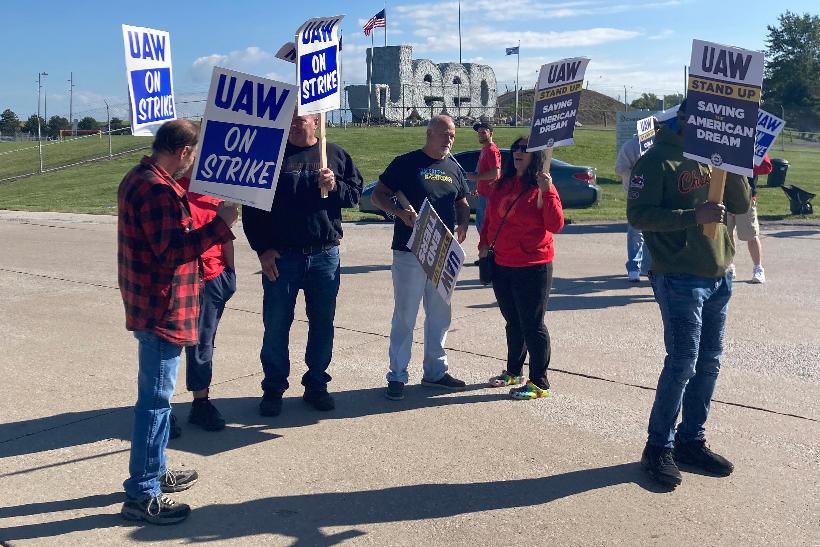
When Rhonda Naus got a job inspecting Jeep Wranglers fresh off the assembly line, her paycheck added up to roughly half of what her co-workers were making. But with that came an expectation that her temporary status eventually would become permanent with a big jump in wages.
Six years later, she’s still doing the same work as her colleagues at Stellantis and still making a lot less.
“I knew I had to start at the bottom. I didn’t think I’d be at the bottom forever,” said Naus, who’s among thousands of striking United Auto Workers nationwide pushing for pay and benefit increases along with an end to multiple tiers of wages for workers across the companies.
From office workers to delivery drivers, companies have become increasingly reliant on temporary workers. Automakers have used the lower-paid workers for years to fill in for absent and vacationing full-time employees and to staff up when production increases.
Tiers for the Detroit automakers were created starting in 2007 as the UAW tried to help them out of serious financial troubles. Even so, GM and Chrysler ended up in government-funded bankruptcies.
“Temp work has to be temporary work,” said UAW President Shawn Fain weeks before the strike began. “We’re going to end the abuse of temps.”
The union is also asking for pay raises as part of the contract talks, as well as a 32-hour week with 40 hours of pay, the restoration of traditional defined-benefit pensions for new hires and a return of cost-of-living pay raises, among other benefits.
Under contracts negotiated in 2019, temporary workers reach full-time status at GM after 19 months of continuous employment and at Ford after two years. At Stellantis, maker of Jeeps, Rams and Chryslers, they get preferential hiring but no guarantees.
In the current negotiations, GM and Stellantis have made offers to increase temporary worker starting pay from $16.67 to about $20 per hour. Ford raised its offer to $21 per hour with profit sharing and said it would make temporaries full-time workers after 90 days of continuous service.
Once temporary workers become full time, they start on a higher pay scale that eventually would reach the top assembly plant wage of $32 per hour.
Of the Detroit Three, Stellantis relies most heavily on temporary employees, who make up about 12% of its UAW workforce, or just over 5,100 employees. GM said its temporary workforce accounts for between 5-10% of its total union members while Ford is at about 3%.
Temps — also known as supplemental employees — account for about one in every five of the 5,800 unionized workers at the Stellantis plant that makes Jeeps.
“You can be here 10 years and still not be full time. That’s crazy,” said Logan Bohn, of Woodhaven, Michigan, who has worked at the plant in Toledo for two years.
Starting pay for Stellantis temporary workers is $15.78 per hour — less than some fast food restaurants — and caps out at $19.28 after four years.
Neither Ford nor GM would comment on Fain’s assertion that the companies are paying poverty wages to temps. A Stellantis spokeswoman noted that the company has said it wants an agreement “that fairly rewards our workforce for their contribution to our success, without significantly disadvantaging Stellantis against our nonunion competitors.”



